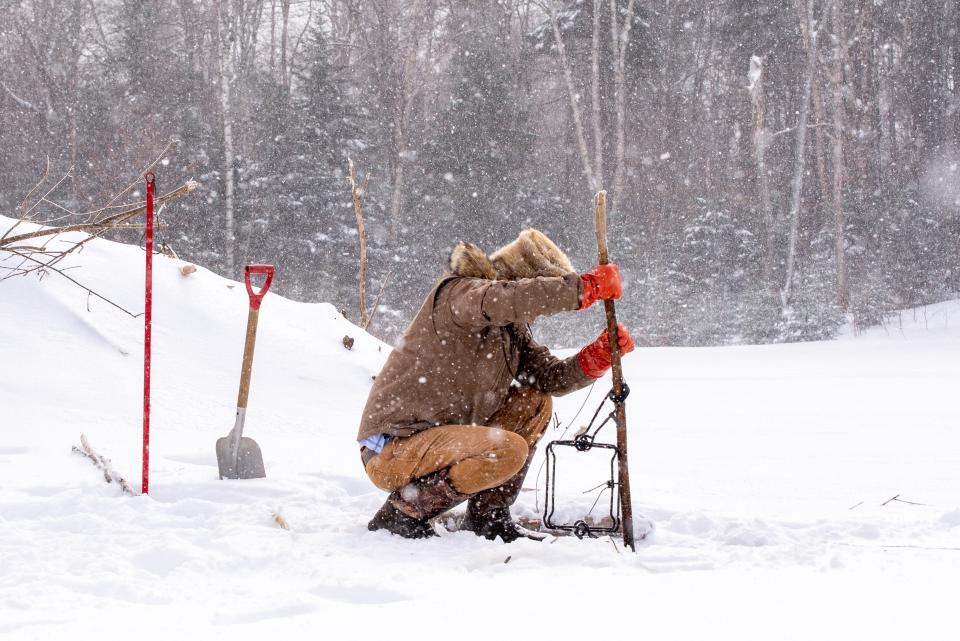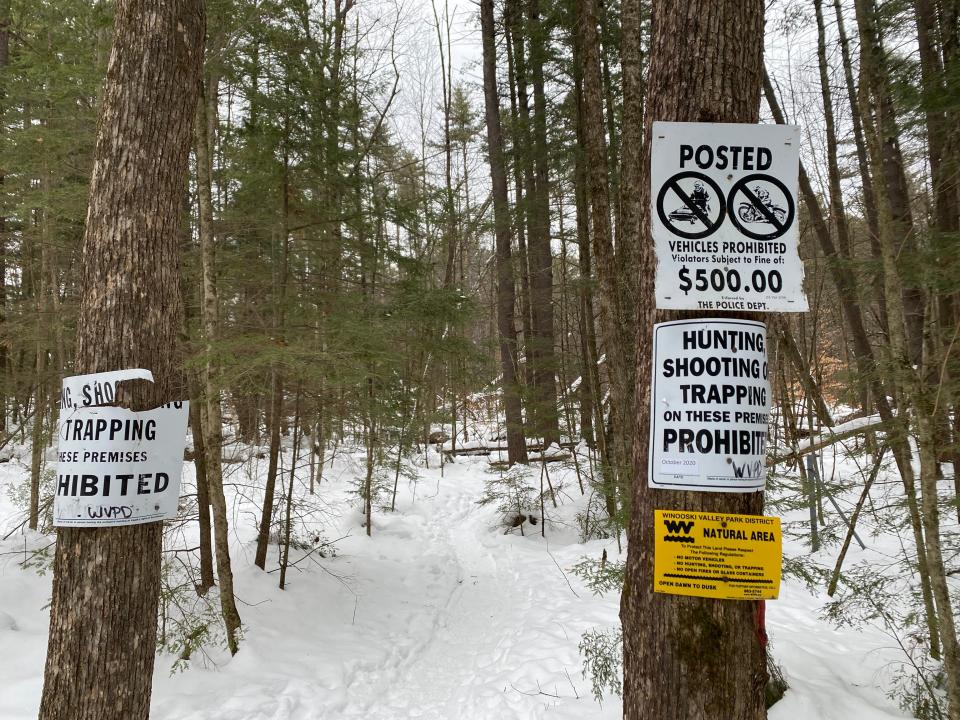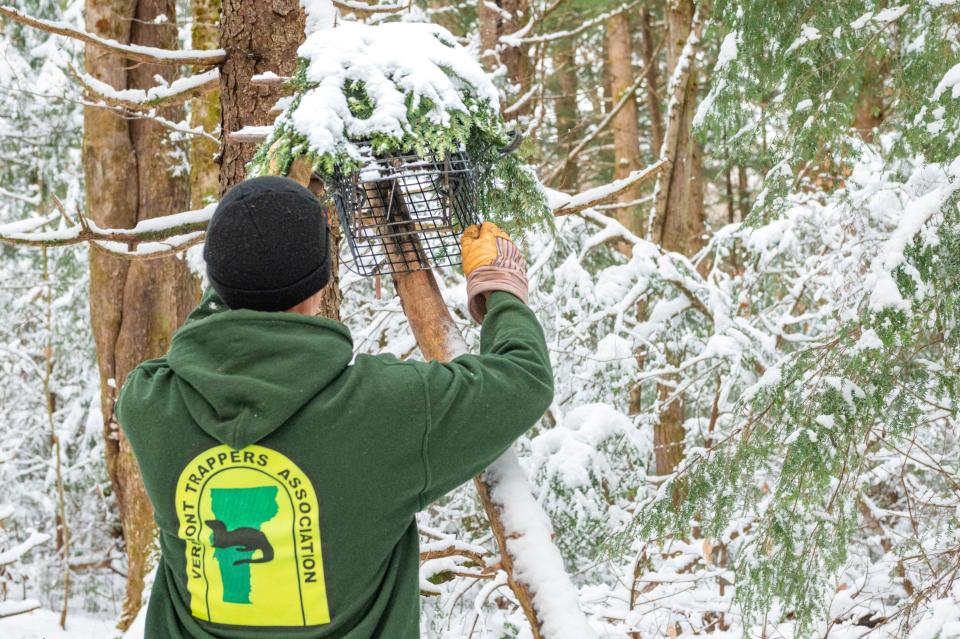Protect Our Wildlife and others sue VT Fish & Wildlife over trapping and hounding rules
What happens when the executive branch of Vermont's state government ignores policy mandates imposed on it by the legislative branch? The legislative branch complains, and the nonprofit sector sues. That's the scenario playing out now over trapping and hounding practices in Vermont.
In 2022, the Legislature directed the Fish and Wildlife Board and the Vermont Fish & Wildlife Department to come up with a rule requiring more humane means of trapping. Lawmakers also mandated new regulations for "hounding," or hunting coyotes with dogs, to better control those dogs and make sure they don't rampage over private property, surprising unsuspecting people and animals unprepared to deal with hunting dogs swarming after prey.
The Legislature imposed a moratorium on hounding until the new rule was enacted, according to a news release from Protect Our Wildlife. Now that moratorium has been lifted, and Protect Our Wildlife and three other nonprofits − Animal Wellness Action, Center For A Humane Economy and Vermont Wildlife Coalition − have filed a lawsuit asking for it to be reinstated.
"The Legislative Committee on Administrative Rules (LCAR), that reviews all rulemaking, warned the Department and Board that their proposed rule did not meet legislative intent and provided multiple opportunities for the Department and Board to amend the proposed rule," Protect Our Wildlife stated. "Both the Department and the Board ignored the warning and proceeded to develop and approve a rule in clear defiance of the legislative branch last month."
Asked for comment, Vermont Fish & Wildlife referred the Burlington Free Press to the Vermont Attorney General's Office, which is representing the agency in the lawsuit brought by Protect Our Wildlife and others.
More: From hunting coyotes with dogs, retrieving game and trap rules - new VT hunting laws
Lauren Jandl, chief of staff for Attorney General Charity Clark, responded to an inquiry from the Free Press by email, saying, "The Attorney General’s Office received the complaint last week. We are still reviewing the complaint and will respond to the lawsuit and the court as appropriate."
Fish and Wildlife trapping and hounding regulations are 'contrary to the intent of the General Assembly'
On Dec. 14, LCAR sent a letter to Secretary of State Sarah Copeland Hanzas, objecting to Vermont Fish & Wildlife's new rule in response to the hunting and hounding mandates from the Legislature. A little more than a month later, on Jan. 16, Protect our Wildlife and three other nonprofits filed their lawsuit in Vermont Superior Court against the Fish and Wildlife Board, the Vermont Fish & Wildlife Department, and Christopher Herrick, commissioner of Fish & Wildlife.
The LCAR letter states that Fish & Wildlife's definitions of trapping, of what constitutes a public trail, of trapping setbacks and its "definition of control of dog(s)" are all "contrary to the intent of the General Assembly."

LCAR also objects to the addition of the words "to hunt" to the definition of trapping, when the Legislature did not ask for the definition to be modified. In its lawsuit, Protect Our Wildlife points out that "there has been no previous controversy within the state as to whether the regulatory definition of trapping was inadequate."
In an interview with the Burlington Free Press on Monday, Brenna Galdenzi, president of Protect Our Wildlife, said in all the discussions of rulemaking, Fish & Wildlife never mentioned a desire to change the definition of trapping, yet the change was made, without any notice. Galdenzi believes it was done to make future efforts to ban trapping more difficult.
"They know when you redefine trapping as a form of hunting, it's afforded all the constitutional protections afforded to hunting," Galdenzi said. "Not to say it would make a ban impossible, but it would be one more hurdle groups like ours would have to jump over."
In response to the objection to the changed definition of trapping, Fish & Wildlife proposed removing the words, "to hunt," but was overruled by the Fish and Wildlife Board, according to Galdenzi.
"Now we're left with rulemaking that does redefine trapping," Galdenzi said.
People and pets are not adequately protected from dangerous traps
LCAR said Fish & Wildlife's definition of a public trail fell short of legislative intent because it didn't include "all trails where persons may reasonably be expected to recreate." On trapping setbacks − the minimum distance from a trail traps can be set − LCAR said Fish & Wildlife defied the Legislature's intent by including exemptions for traps set in the water or under ice.

The cumulative effect of these shortcomings is to not protect the public from leghold and body-crushing kill traps, according to Protect Our Wildlife.
"Clara, a 3-year-old Shetland sheepdog, was killed in a body crushing trap in Corinth in December of 2022," Protect Our Wildlife said in a news release. "Just this past October, a German Shepherd was injured in a body crushing kill trap set in shallow water in Castleton close to the trail."
Who let the dogs out? Fish & Wildlife fails to rein in hounding as Legislature asked.
LCAR said Fish & Wildlife also fell short of the Legislature's intent to not allow hounding "unless there is a required means of controlling dogs that sufficiently minimizes the risk that dogs pursuing coyotes will enter onto land that is posted against hunting, enter onto land where pursuit of coyote with dogs in not authorized, harass or harm people or domestic animals, and cause other unintentional damages to people or property."

Protect Our Wildlife said in its news release that hounds pursuing coyotes are often miles away from the hunters, and the Fish & Wildlife Department and Wildlife Board were "required to minimize risks of conflict with the public."
"Their solution was to simply require that hounds wear GPS and shock collars − which is already a standard practice for hounders," Protect Our Wildlife said. "This does not effectively improve the control of hounds, a key legislative mandate."
In its lawsuit, Protect Our Wildlife points out that handlers often remain in their cars as their dogs pursue coyotes, waiting until the GPS indicates the dogs have bayed or killed "what is presumed to be a coyote," because no further movement of the dogs is indicated on the GPS. Handlers have no idea if their dogs have strayed onto land where they're not allowed and "certainly cannot tell if the dogs have encountered a person or domestic animal," according to the lawsuit.
"When these all-powerful government entities not only ignore the will of the people, but (also) ignore the legislative branch, they must be held accountable − that is why litigation is necessary," Galdenzi said in a statement.
Contact Dan D’Ambrosio at 660-1841 or ddambrosi@gannett.com. Follow him on Twitter @DanDambrosioVT. This coverage is only possible with support from our readers.
This article originally appeared on Burlington Free Press: Nonprofits sue Vermont over rules governing trapping, hounding

